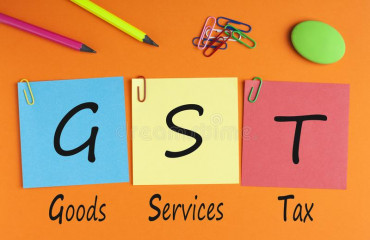
Introduction: The Ministry of Finance recently released data revealing a significant achievement in India’s tax revenue landscape: the highest-ever GST collection for April 2024, totaling an impressive ₹2.10 lakh crore. This milestone, accompanied by a detailed breakdown and analysis, sheds light on the underlying factors driving this historic feat.
Introduction: The Ministry of Finance recently released data revealing a significant achievement in India's tax revenue landscape: the highest-ever GST collection for April 2024, totaling an impressive ₹2.10 lakh crore. This milestone, accompanied by a detailed breakdown and analysis, sheds light on the underlying factors driving this historic feat.
Detailed Analysis: The April 2024 GST collection reflects a substantial year-on-year growth of 12.4%, indicating a robust economic performance. A closer look at the components reveals a positive trend across various segments:
1. Central Goods and Services Tax (CGST): ₹43,846 crore
2. State Goods and Services Tax (SGST): ₹53,538 crore
3. Integrated Goods and Services Tax (IGST): ₹99,623 crore
4. Cess: ₹13,260 crore
Additionally, the inter-governmental settlement process showcases the effective revenue distribution mechanism, with the central government settling ₹50,307 crore to CGST and ₹41,600 crore to SGST from the IGST collected.
State-wise analysis provides insights into regional variations, highlighting notable growth percentages and revenue figures compared to the previous year. This granular examination offers valuable insights into the economic dynamics at play within each state or union territory.
Conclusion: The April 2024 GST collection milestone of ₹2.10 lakh crore signifies a remarkable achievement for India's fiscal landscape. This record-high collection, coupled with robust year-on-year growth, underscores the resilience and vibrancy of the Indian economy. As the Ministry of Finance continues to monitor and analyze these trends, this achievement sets a positive trajectory for fiscal stability and economic prosperity.
*****
Ministry of Finance
GST revenue collection for April 2024 highest ever at Rs 2.10 lakh crore
GST collections breach landmark milestone of ₹2 lakh crore
Gross Revenue Records 12.4% y-o-y growth
Net Revenue (after refunds) stood at ₹1.92 lakh crore; 15.5% y-o-y growth
Posted On: 01 MAY 2024 11:55AM by PIB Delhi
The Gross Goods and Services Tax (GST) collections hit a record high in April 2024 at ₹2.10 lakh crore. This represents a significant 12.4% year-on-year growth, driven by a strong increase in domestic transactions (up 13.4%) and imports (up 8.3%). After accounting for refunds, the net GST revenue for April 2024 stands at ₹1.92 lakh crore, reflecting an impressive 15.5% growth compared to the same period last year.
Positive Performance Across Components:
Breakdown of April 2024 Collections:
- Central Goods and Services Tax (CGST): ₹43,846 crore;
- State Goods and Services Tax (SGST): ₹53,538 crore;
- Integrated Goods and Services Tax (IGST): ₹99,623 crore, including ₹37,826 crore collected on imported goods;
- Cess: ₹13,260 crore, including ₹1,008 crore collected on imported goods.
Inter-Governmental Settlement: In the month of April, 2024, the central government settled ₹50,307 crore to CGST and ₹41,600 crore to SGST from the IGST collected. This translates to a total revenue of ₹94,153 crore for CGST and ₹95,138 crore for SGST for April, 2024 after regular settlement.
The chart below shows trends in monthly gross GST revenues during the current year. Table-1 shows the state-wise figures of GST collected in each State during the month of April, 2024 as compared to April, 2023. Table-2 shows the state-wise figures of post settlement GST revenue of each State for the month of April, 2024.
Chart: Trends in GST Collection

Table 1: State-wise growth of GST Revenues during April, 2024[1]
Table-2: SGST & SGST portion of IGST settled to States/UTs
April (Rs. in crore)
[1]Does not include GST on import of goods
[2] Post-Settlement GST is cumulative of the GST revenues of the States/UTs and the SGST portion of the IGST settled to the States/UTs
